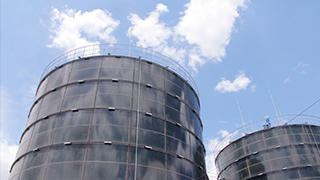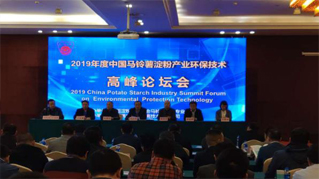The most obvious trends in the energy conservation and environmental protection industry: environmental protection industrialization.
The meaning of environmental industrialization contains two levels. The first is that energy-saving and environmental protection is gradually developing as a form of industry, and the second, the leading enterprises in this sector are growing to be industrialized groups.
The first level is quite obvious. The energy conservation and environmental protection industry has reached an output value of about RMB 4.5 trillion in 2016, accounting for 6% of the national GDP, undoubtedly making it a pillar industry. But just ten years ago, its total output value was only a few hundred billion yuan. Over one decade, energy conservation and environmental protection has become a huge industry from concept to reality, with huge potentials for growth.
The second level denotes a major trend of market competition, which is also the main theme of this article, that is, the development trend of environmental protection enterprises - the trend of industrialized groups.
Era 1.0: Single Business of Environmental Protection
In the initial stage of energy conservation and environmental protection development, most environmental protection enterprises exist by relying on single business. For example, water enterprises mainly deal with sewage treatment or water supply, while garbage disposal enterprises engage in waste incineration or landfill, atmospheric management enterprises handle desulfurization and denitration, and supporting enterprises provide auxiliary engineering and consumable products services. The business model of this period is relatively simple and the profit channel is clear. This is the Era 1.0 that we often talk about: environmental companies achieve profits mainly through a single business form, positioned themselves in a separate link in the entire value chain.
Era 2.0: Composite Business Model and Diversified Development
With the development of the energy conservation and environmental protection industry, environmental protection companies ushered in Era 2.0 around 2012. During this period, some environmental companies began to adopt relatively complex business models, with business structure extending vertically from a single point in the past. Industrialized groups began to sprout and developed rapidly, and the embryonic form has taken shape. This is what we call the Era 2.0: environmental companies have complex business structures and diverse profit models.
A common form is to extend from a single investor to engineering construction sector, forming a complete profit chain from investment, construction and transportation. Excellent environmental companies have even made breakthroughs in the sinking industry in terms of design, core equipment, consumables (such as pharmaceuticals and catalysts), etc., which forms a vertically integrated development pattern with core resources as the origin.
In this period, we define the integrated industrialized group in this way: with considerable scale, achieve profit through more than two links of the value chain, with roughly equal amount of profits respectively.
For example, if an environmental engineering company occasionally holds a business property, but its revenue and profit patterns are very different, it will not be regarded as an environmental industrialized group.
At present, this pattern is still maturing itself. Typical companies such as China Everbright International, Beijing Capital, and BEWG have become 2.0-version industrialized group by virtue of their industrial chain.
In Era 2.0, apart from the integrated extended industrial chain, relative diversification has become another development direction. For example, develop from a single water business to cross-industry areas such as waste disposal and soil remediation to form a large environmental protection industry.
As we all know, the business model, technology and development stages in the environmental protection industry segment are quite different, so it is often difficult for specialized companies to compete across industries. However, diversified companies can provide a wide range of overall solutions for a city or region, presenting obvious advantages, so relative diversification has become a choice for some environmental enterprises.
Overall, the industrialization trend of the Era 2.0 is obvious, and the development path is clear, which is the choice for most environmental enterprises to achieve industrialization development at present.
Era 3.0: Integration of Industry and Finance
There are obvious shortcomings in the Era 2.0 industrialization, which is highly dependent on investment. Due to the needs for business model design, the back-end industry relies on the scale of front-end investment; coupled with competition, the back-end industry is difficult to rapidly expand and replicate. In order to solve this problem, the mode of integration of industry and finance has developed to a certain extent in the past two years, which also means that the Era 3.0 is coming.
At present, the national environmental protection industrialization is in the Era 3.0. In order to solve the defects of the previous era, many environmental companies began to use financial tools to solve funding problem. A typical approach is to set up an industry fund, with main enterprises contributing a small portion as posterior and GP raising the rest funds. The acquisition of project or funds resourcing is achieved through industrial funds instead of original enterprise investment department, with environmental project moving towards operation-investment separation. But in effect, the control of the project is still in the hands of enterprises.
At this stage, funds and financial leasing models have been favored by the strong players of the Era 2.0. Almost all industrial groups in period, including some listed companies with sound financing channels, have established or deeply participated in industry funding to form an effective industry-finance interaction.
In essence, the Era 3.0 has a strong financial characteristic and is an extension of the Era 2.0. The involvement of financial sector has strengthened the vertical integration of investment links. During this period, the industrialization form of environmental enterprises becomes diversified, and they start to deviate from traditional environmental industry to financial sector, forming a stronger grip of the industry.
As a result, the competition in environmental protection industrialization contains three levels: environmental enterprises that have achieved deep industrialization have begun to implement a cross-border integration of industry and finance – they are in Era 3.0; those aiming at basic value chain industrialization are strengthening their business model – they are in Era 2.0; and a considerable number of companies still rely on engineering or equipment manufacturing and other single point to make profit – they are in Era 1.0.
The gap between different environmental companies is huge, which is a main feature of the industry. Underachievers, including those who are still at the 1.0 stage, are often at a disadvantage because the industry itself is increasingly integrated with capital and is ushering into a new age of combining industry and finance.
Era 4.0: Where does environmental industrialization head for?
Environmental industrialization Era 4.0 has arrived quietly, which is a bad news for those companies that are still in the Era 1.0.
Then, where is environmental industrialization Era 4.0 heading for? With the newest knowledge about the environmental protection industry, we believe deeper cross-border and platform-based development will be a future trend. The Era 4.0 will cultivate a number of competent enterprises in the area, but only a handful will be able to achieve a perfect transformation at this stage.
For the environmental companies who want to become bigger and stronger, we suggest that they carefully study the development trend of environmental industrialization and formulate proper measures, especially on the redesign of business models, in order to achieve corner overtaking and avoid lagging behind other counterparts. For leading companies, they can consolidate their position in the industry by virtue of their industrialized resource advantages. For most small and medium-sized businesses, the Era 4.0 is also a good opportunity for development.







